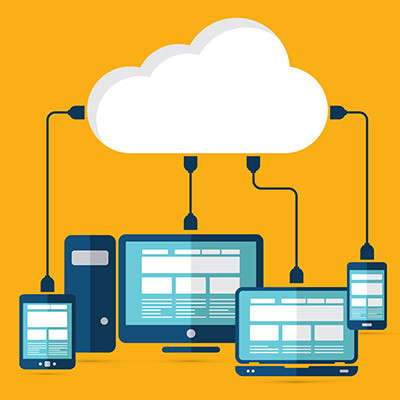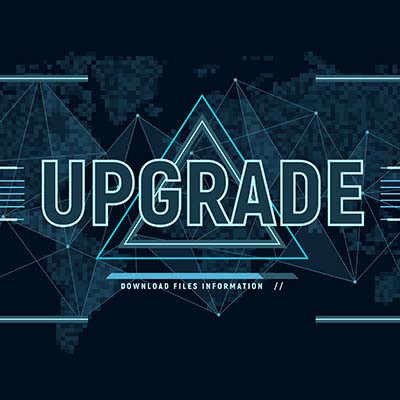Businesses today need to have a robust and secure wireless network, but building one isn’t always that easy. Since there are a lot of machines that use your business’ Wi-Fi—from core machines that are essential to your business’ productivity, to IoT devices that your employees or customers bring onto the network—it is important to understand how best to structure your wireless networks to meet the demands that are put on them.
Computerware Blog
As we enter the third quarter of the year, now is as good a time as ever to reevaluate how you are spending your IT budget. According to Gartner, your IT spending might actually be increasing, assuming it’s in line with what your organization wants and needs. Are you being intentional with your IT spending? Where are you investing it? Are you spending it on avenues for continued growth? Gartner’s study might yield some interesting ideas which you can call upon to inform your own spending practices.
More small businesses than ever before are selling products, goods, and services to their loyal customers, which means they need ways to process these transactions. Enter the point of sale system, a business’ preferred tool to process transactions in a retail environment. What goes into a successful point of sale system, and how can you use one for your business?
Your business runs on its data, and without an infrastructure to support your operations, your productivity will be dead in the water. Most businesses choose to host their data on servers, and if you know anything about these complex pieces of machinery, you know that managing and maintaining them can be an involved process. Let’s go over some best practices to ensure you manage your server infrastructure appropriately.
If we asked you what the difference is between productivity and innovation, would you be able to give us a clear answer? The answer is that one facilitates the other, aided by technology to improve operations and free up employees to focus on other, more lucrative tasks. Let’s take a look at how improving productivity can improve innovation, thereby increasing your organization’s ability to do great things.
It doesn’t matter what kind of business you are; you probably use the telephone to a certain degree. Whether you are still relying on landlines or have graduated to more advanced solutions, your organization will always need a solid phone system to back up its communications with clients, customers, and staff. A VoIP system can be an incredibly valuable asset when implemented properly.
Taking care of your business technology can be exhausting, especially if you don’t have dedicated IT staff to ensure that it happens on a regular basis. Thankfully, with managed services, it’s easier than ever to make sure that your desktop solutions are kept up-to-date and ready for whatever comes their way. Here are three tips you can use to stay on top of desktop maintenance and management for your business.
How often do you find yourself digging through filing cabinets to find paper documents? While these cabinets might have once been the norm in business offices, they are slowly becoming a liability as more and more businesses go digital with their operations and storage options. Today, we’d like to discuss the importance of document management for your organization and how it can help you improve operations.
What are some of the modern challenges that your business struggles with? Maybe it’s technology management or maybe it’s network security. According to the GDPI 2021 survey issued by Dell, certain trends are overwhelmingly dangerous for countless businesses out there. Let’s take a look at the results of the 2021 survey and what they might mean for your business.
There are a lot of businesses that depend on their Customer Relationship Management (CRM) platform. It’s not just used to manage their customer relationships, it also helps with production, invoicing, operations, human resources, and more. Today, we’ll take a look at the CRM and see how strategic use of this platform can help build your business.
With so many workers taking up the mantle of remote work, it’s no surprise that businesses are looking for ways to accommodate these “new” working arrangements. Here are just a few ways that businesses of all types—small businesses included—can work toward making their operations even more flexible and mobile than before.
With today’s ever-expanding remote workforce, there is all the more reason to implement technology solutions that empower your organization to increase its range of options for working outside of the office. We’ve put together three of the key technology solutions we think your organization could benefit from to improve its remote capabilities and take business on the road.
With the Internet of Things growing at a rapid pace, there are many opportunities for your business to reap considerable rewards from its proper utilization. It can automate certain processes, save you capital, and mitigate human error. Let’s examine how your business can use the Internet of Things to its benefit without breaking the bank.
While considering cybercrime, it’s very easy to slip into a dichotomy: hackers are bad, while not-hackers are good. Like most things in life, however, the truth is that there is a spectrum to cybercrime. Let’s take a few moments to consider a few different types of hackers, and the hats that their roles determine they wear.
Ransomware is one of the worst threats you can encounter, and the first half of 2021 saw more large-scale ransomware attacks against both individuals and businesses than ever before. A new threat, however, promises to disrupt this trend, and it’s one that you might not have considered: fake ransomware attacks.
Nowadays, every company relies on some kind of software. It has immense value as it can be used to make business more efficient and help reduce costs. In order to get the most out of your software, it has to be continuously managed. This is done with three steps: leveraging the assets available, testing your strategies, and understanding what it is you have.
Some businesses struggle to obtain the appropriate software solutions, especially if they are on a budget. Some even choose to take advantage of free, open-source software simply because it helps their bottom line. There are some benefits to using open-source software, but there are also dangers involved.
Technology changes so rapidly that it can be difficult to gauge whether or not you should be upgrading right away or examining other options for the same purposes. How can you avoid investing in the wrong solution as a result of the excitement that a new idea or concept can bring? It all starts with knowing what within your organization needs to change.
Sometimes, no matter how hard you try, technology just doesn’t want to cooperate. This frustration often leads users to contact the help desk, which is fine, but sometimes there are small things you can do to resolve issues that you might not have thought about doing. These simple steps might save you a bit of time and help to resolve your issues faster and more efficiently.




















